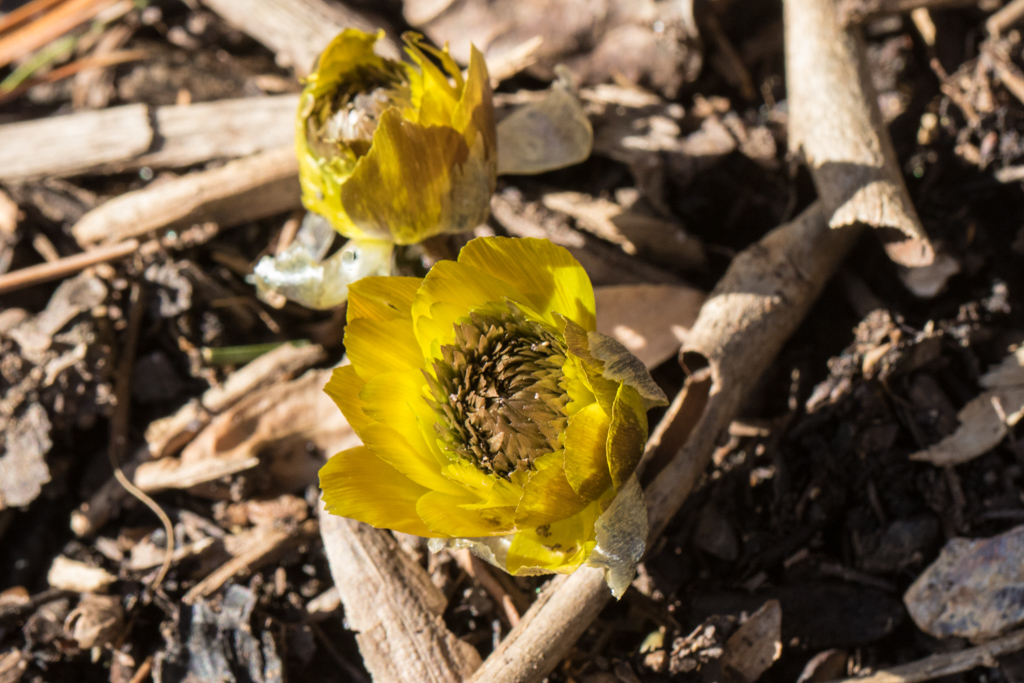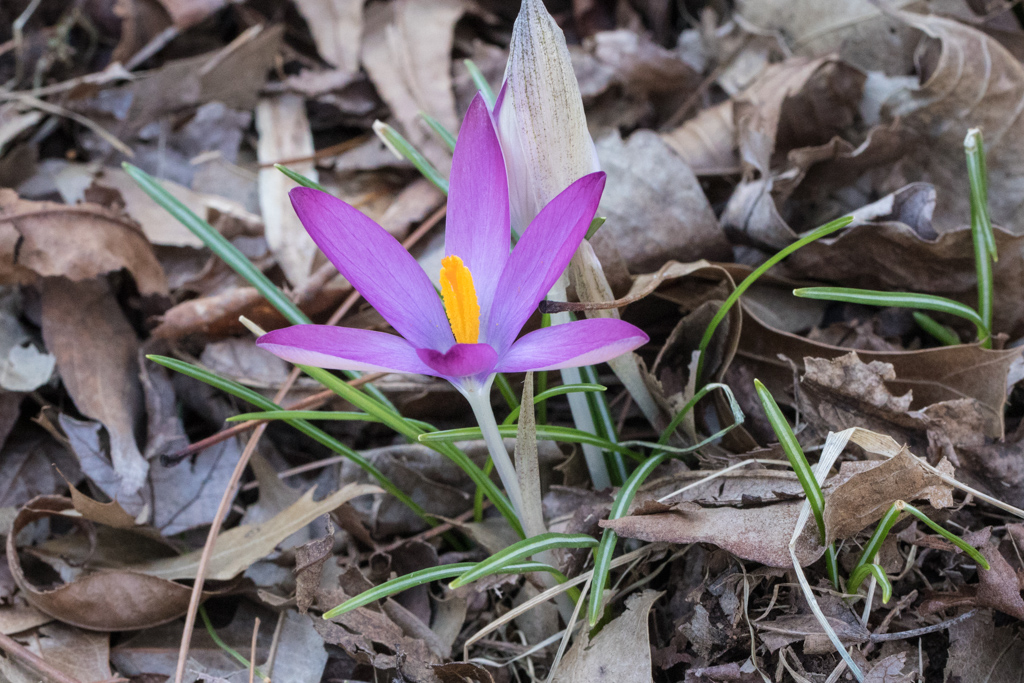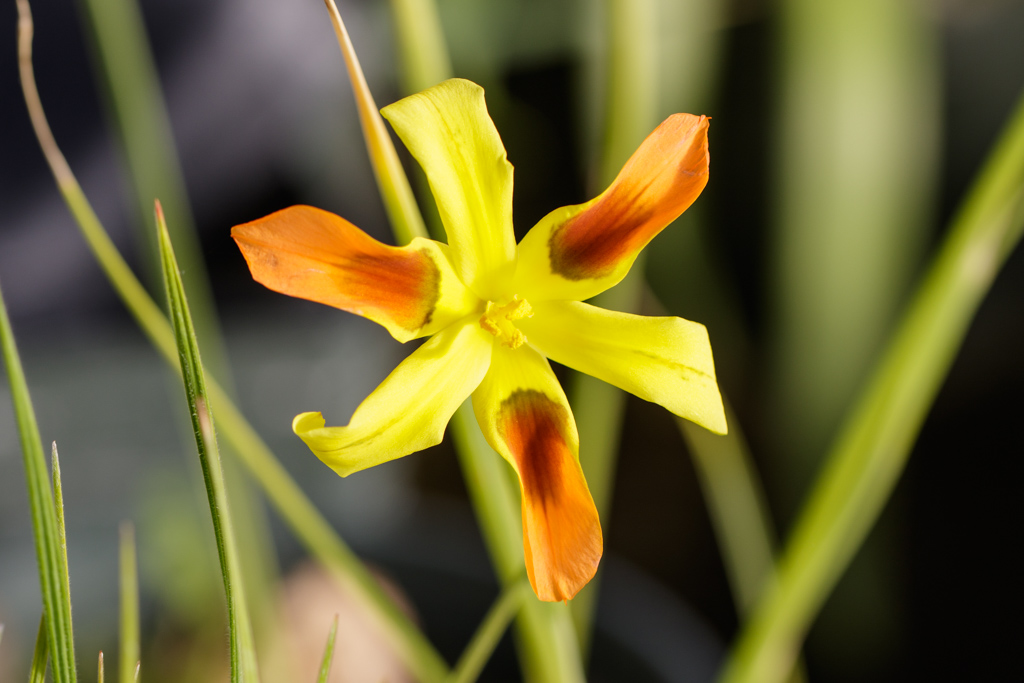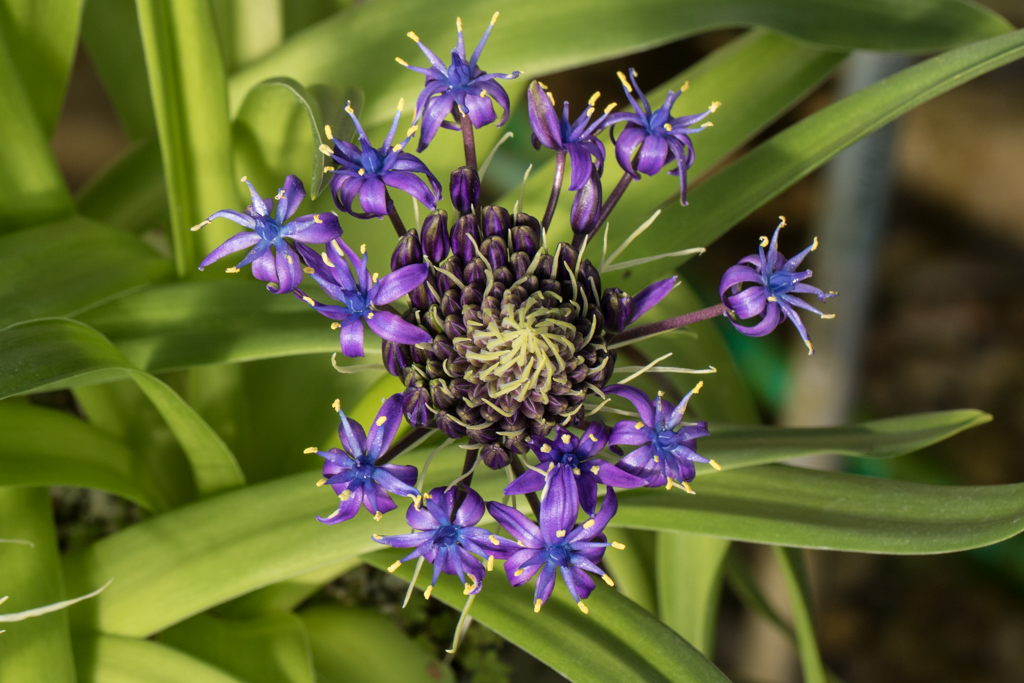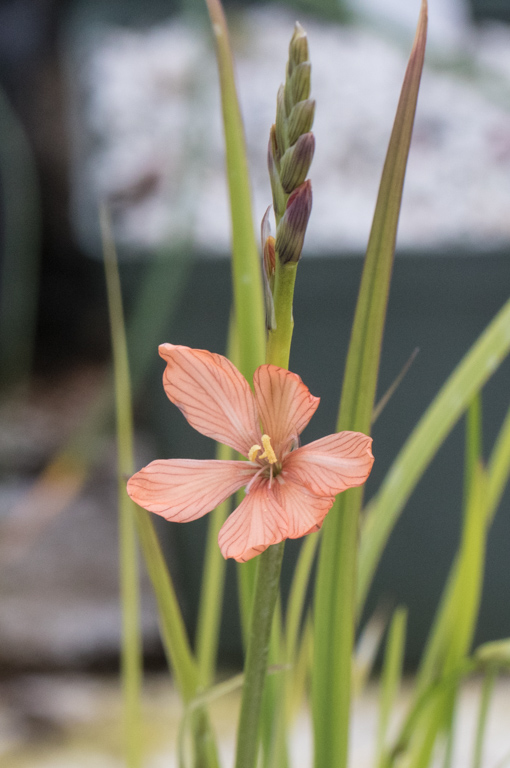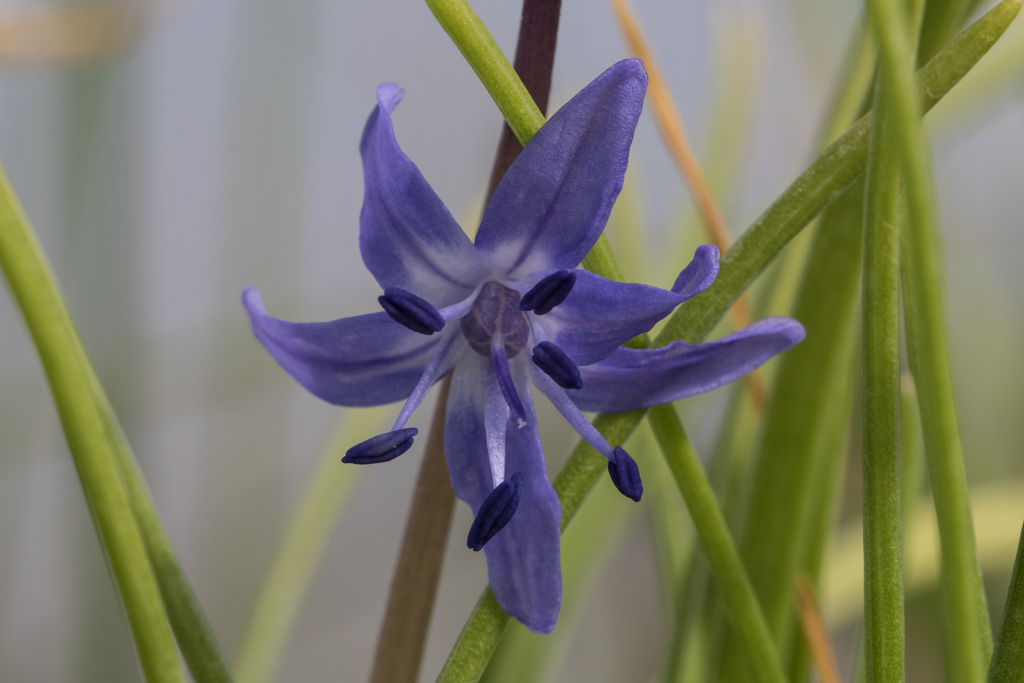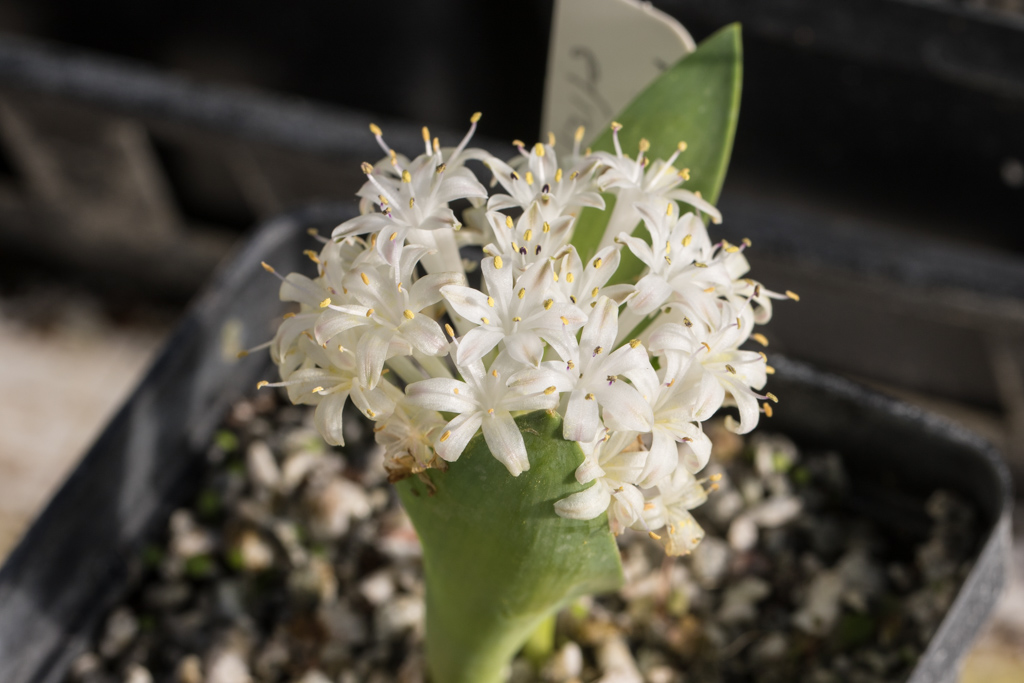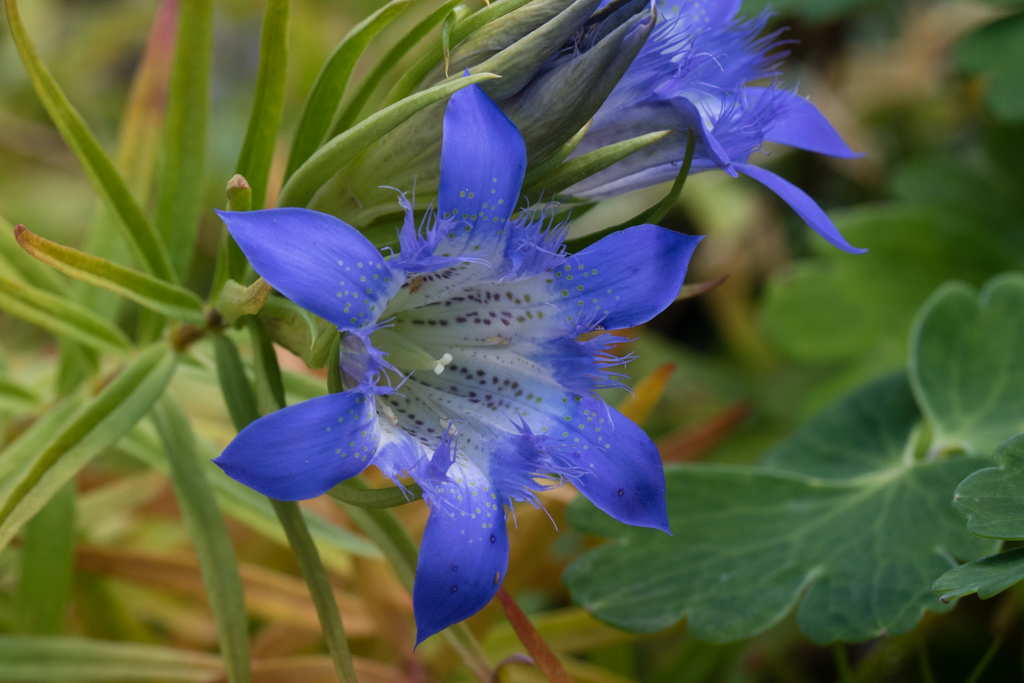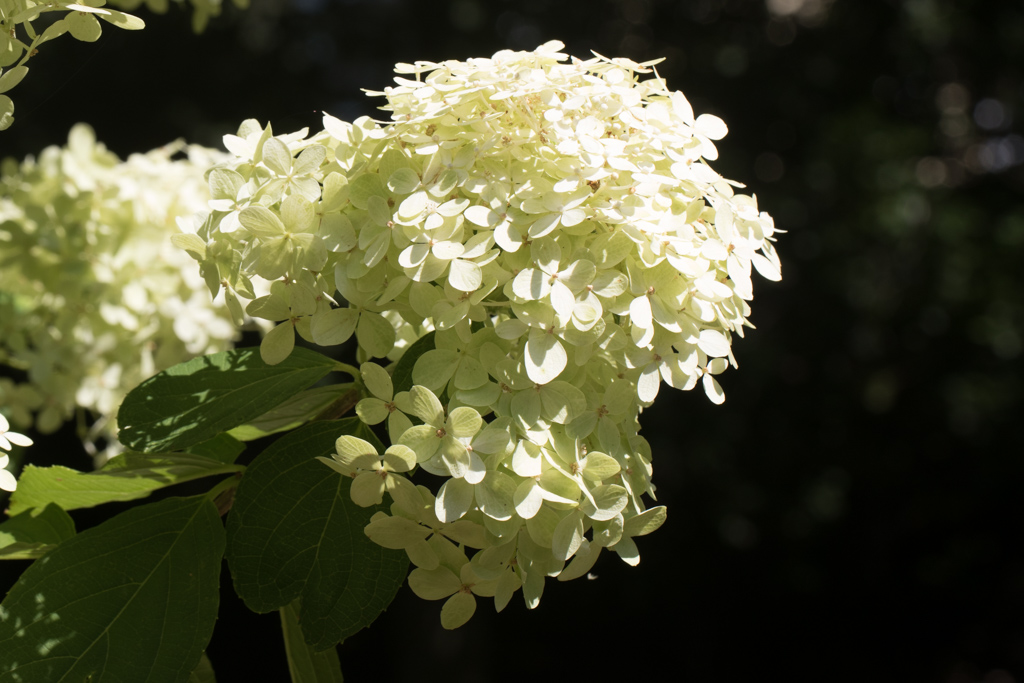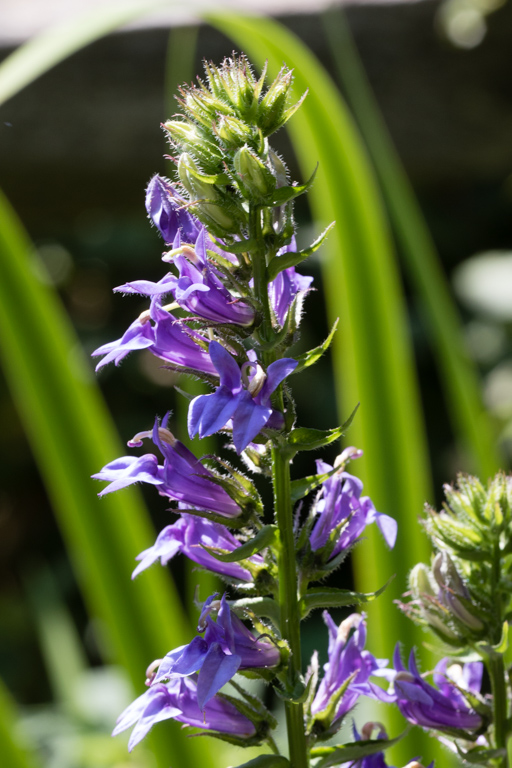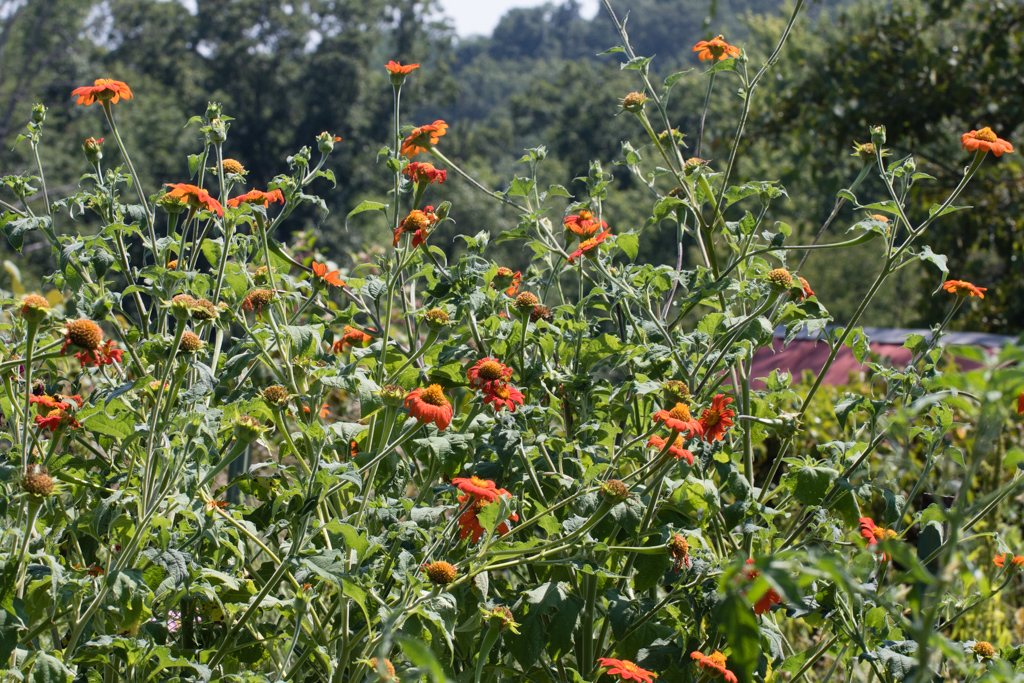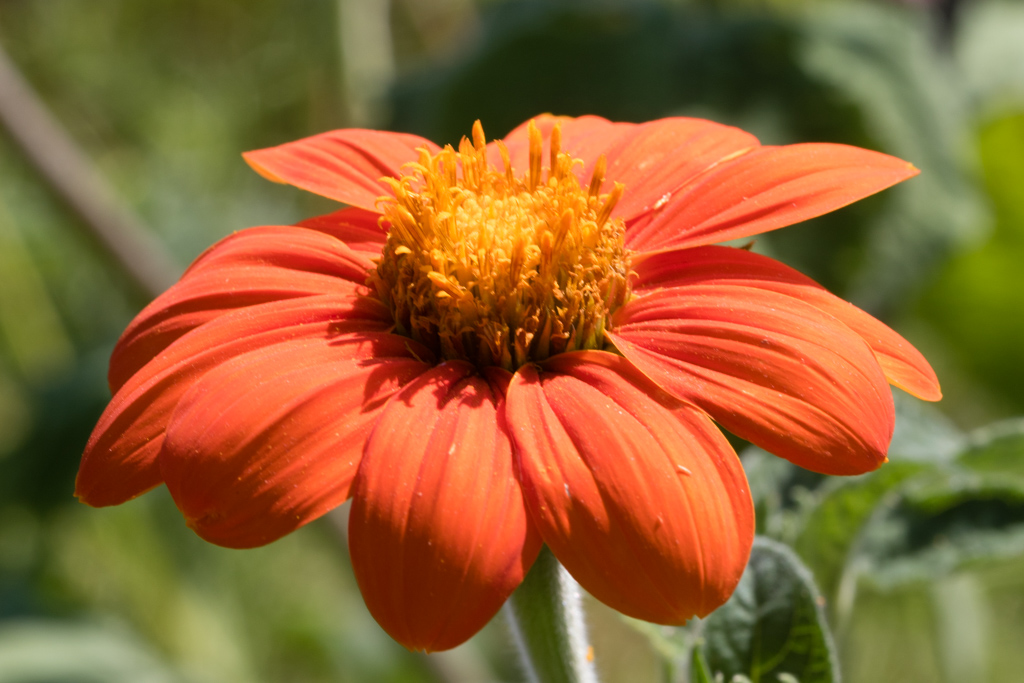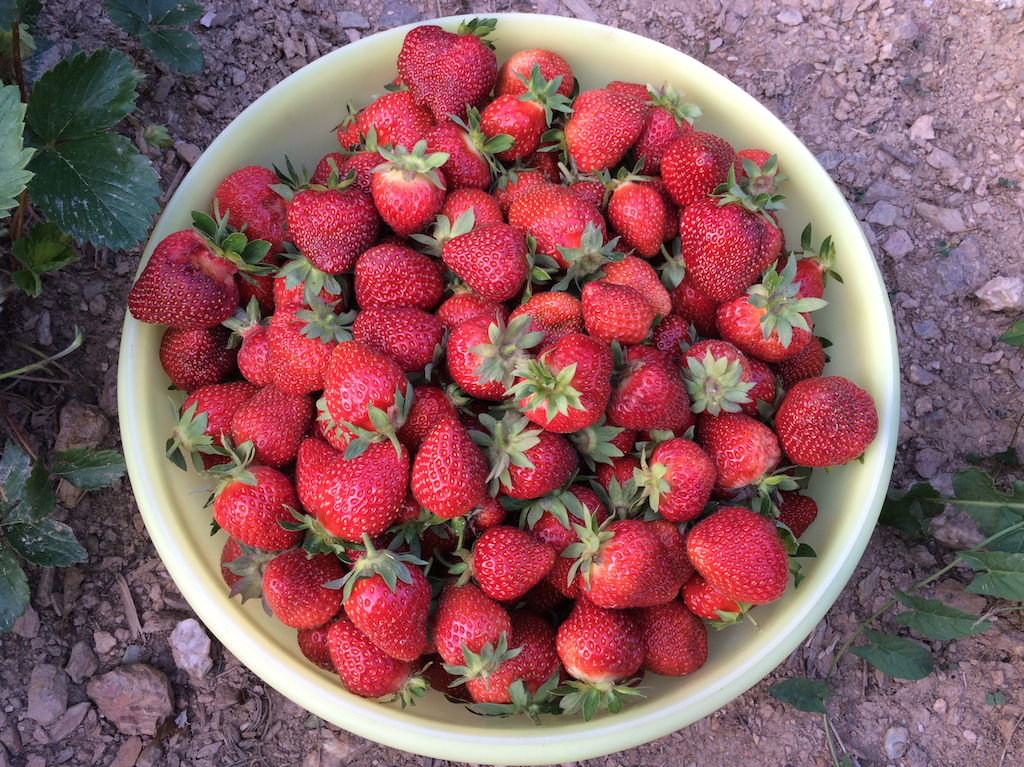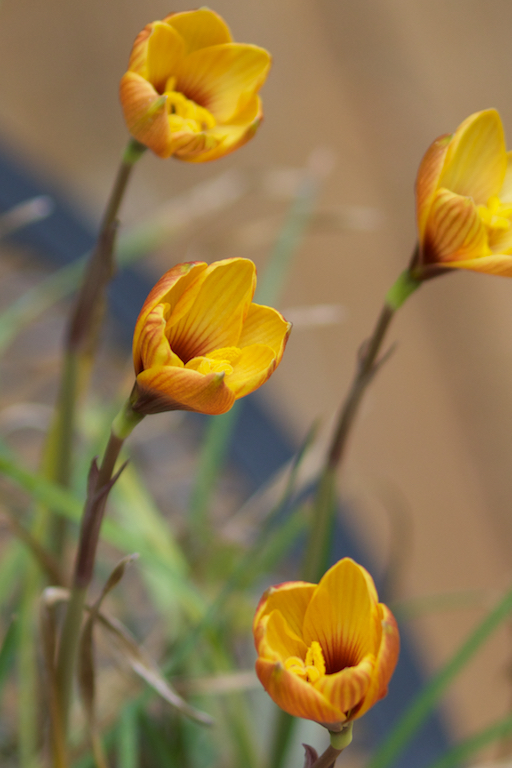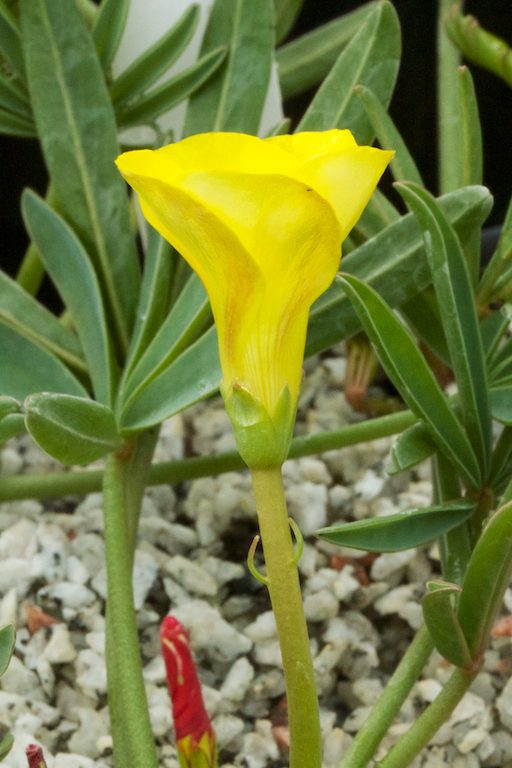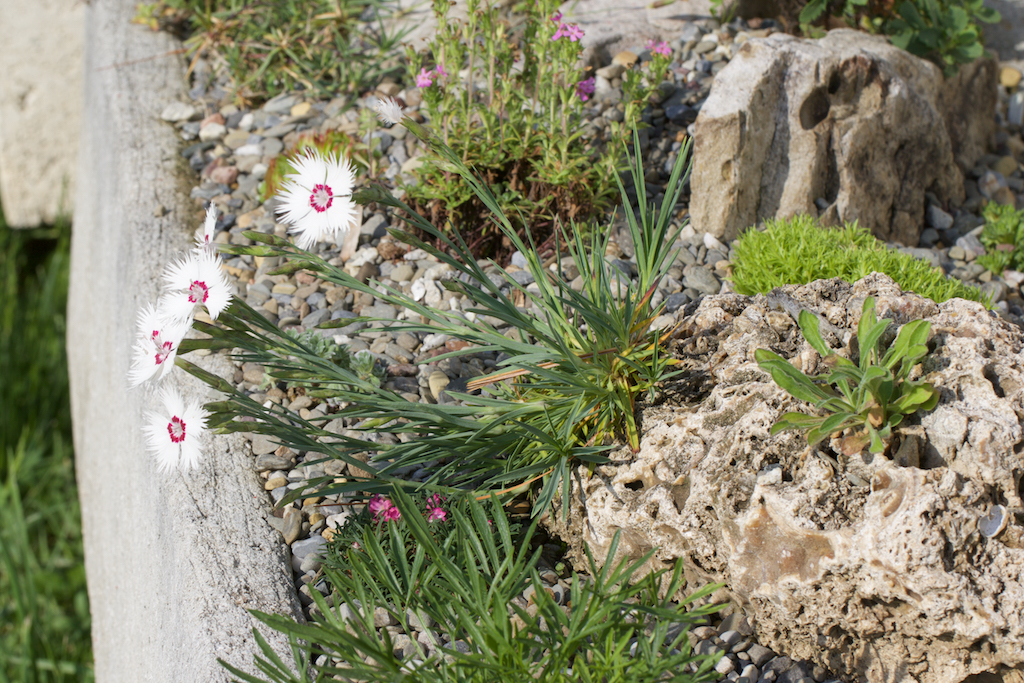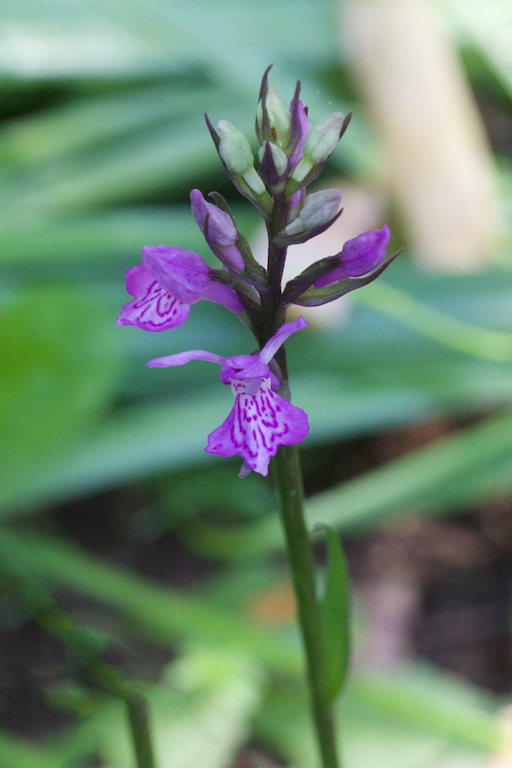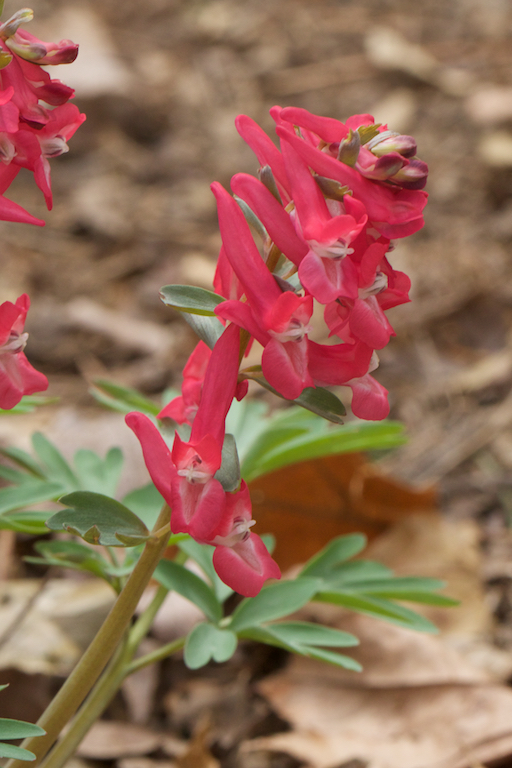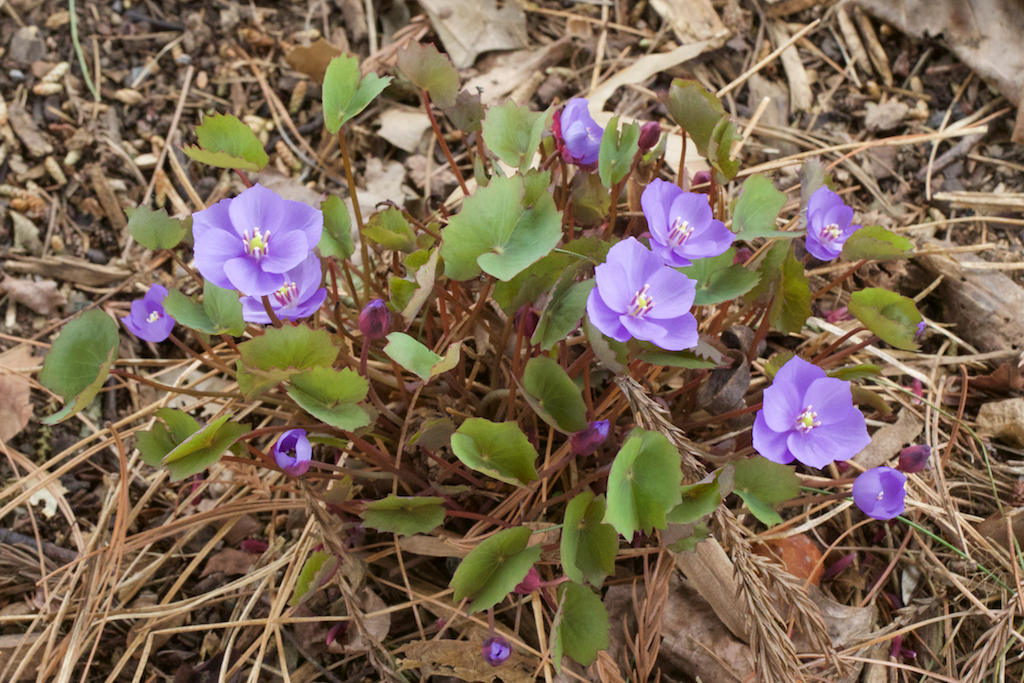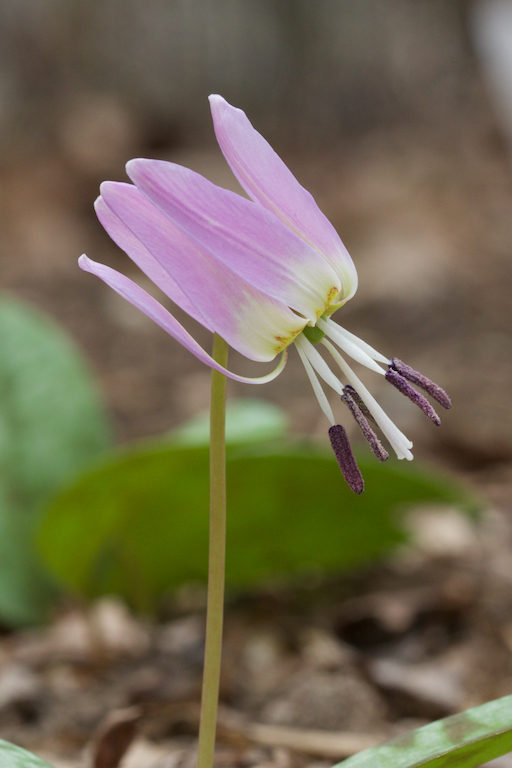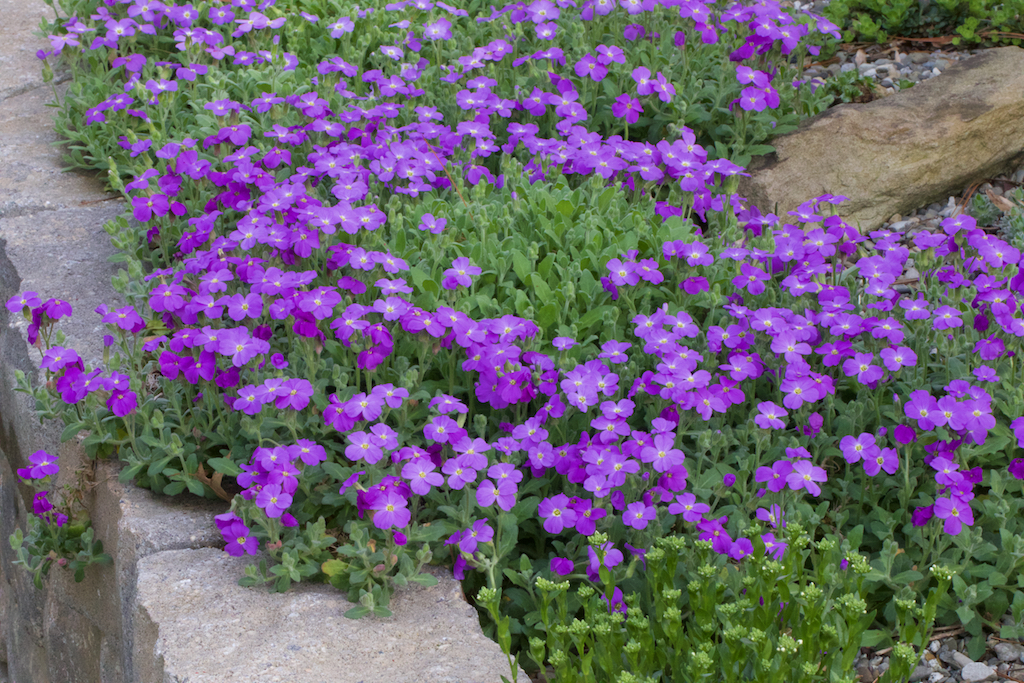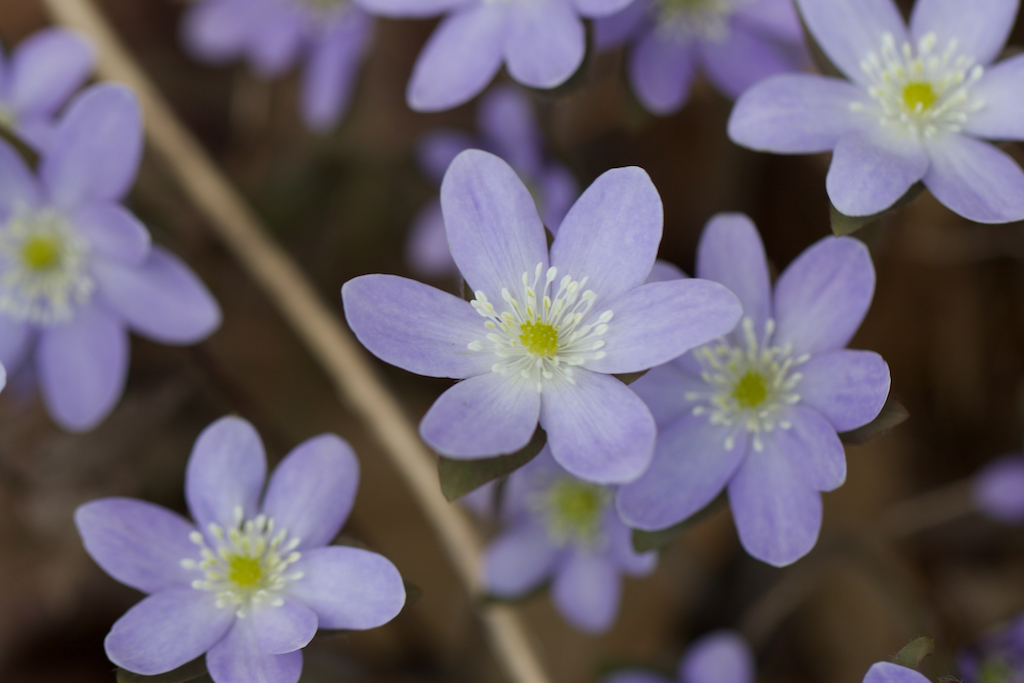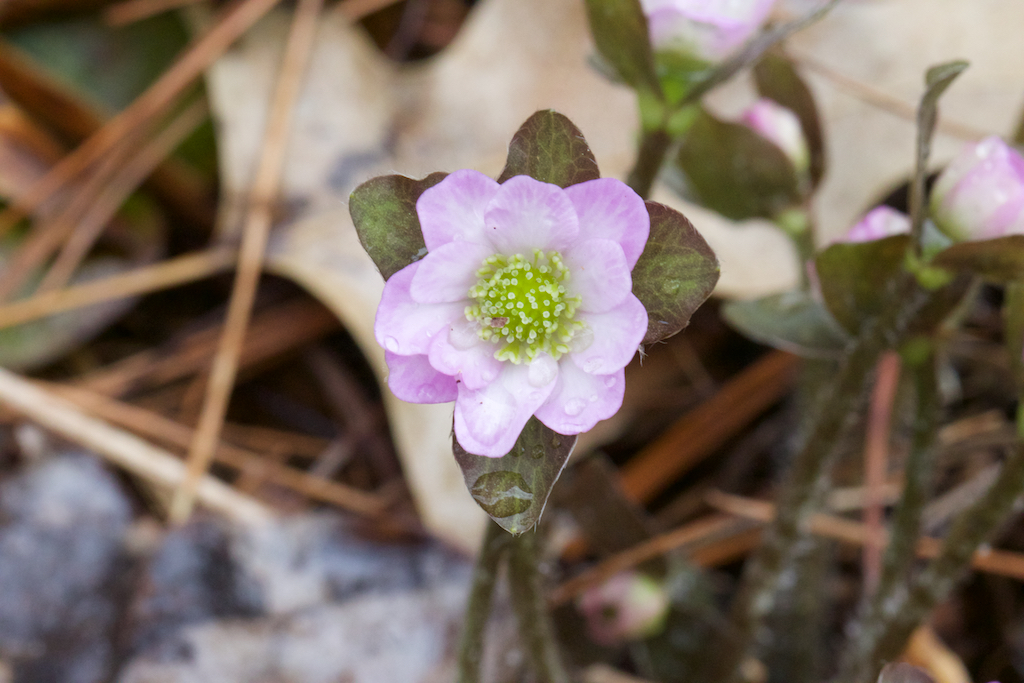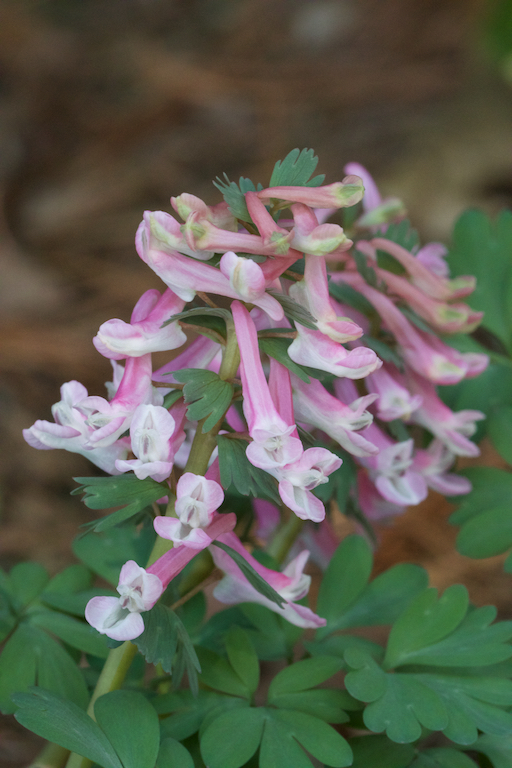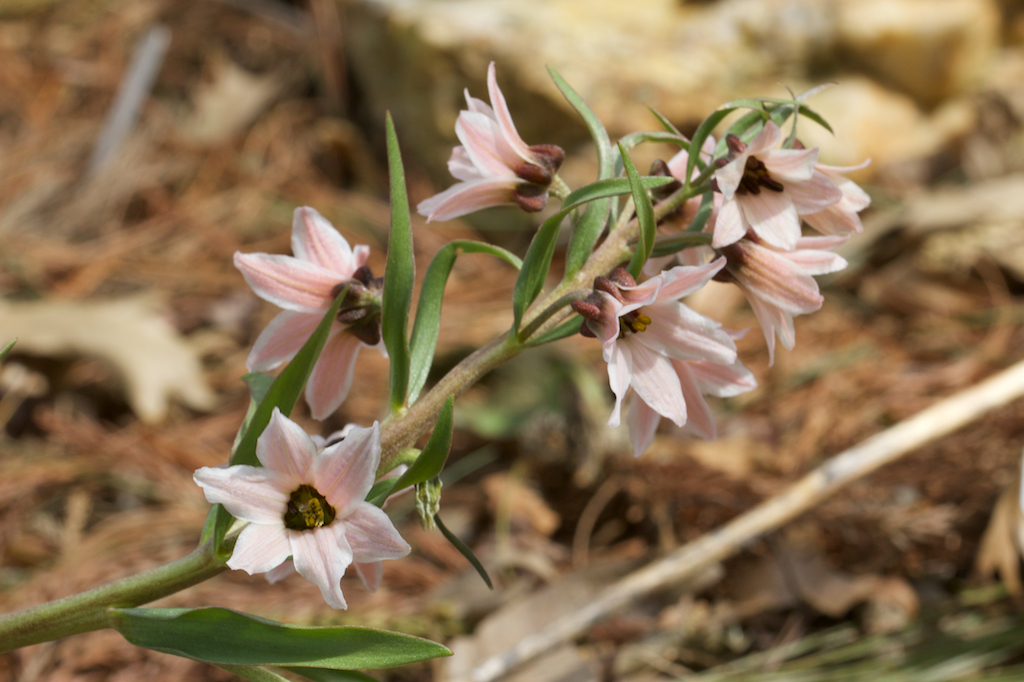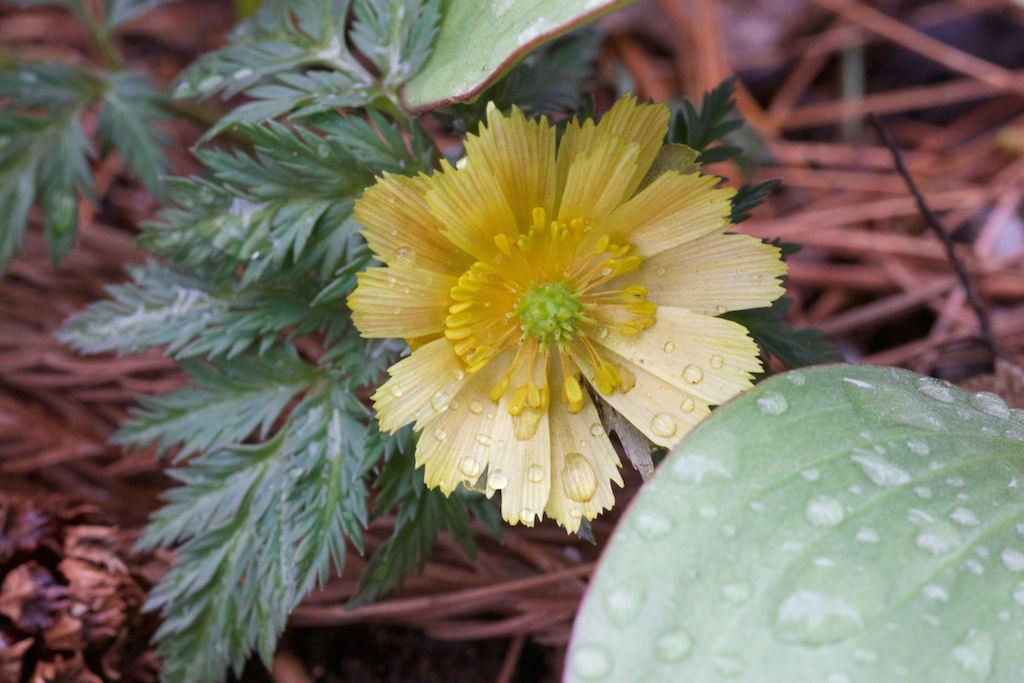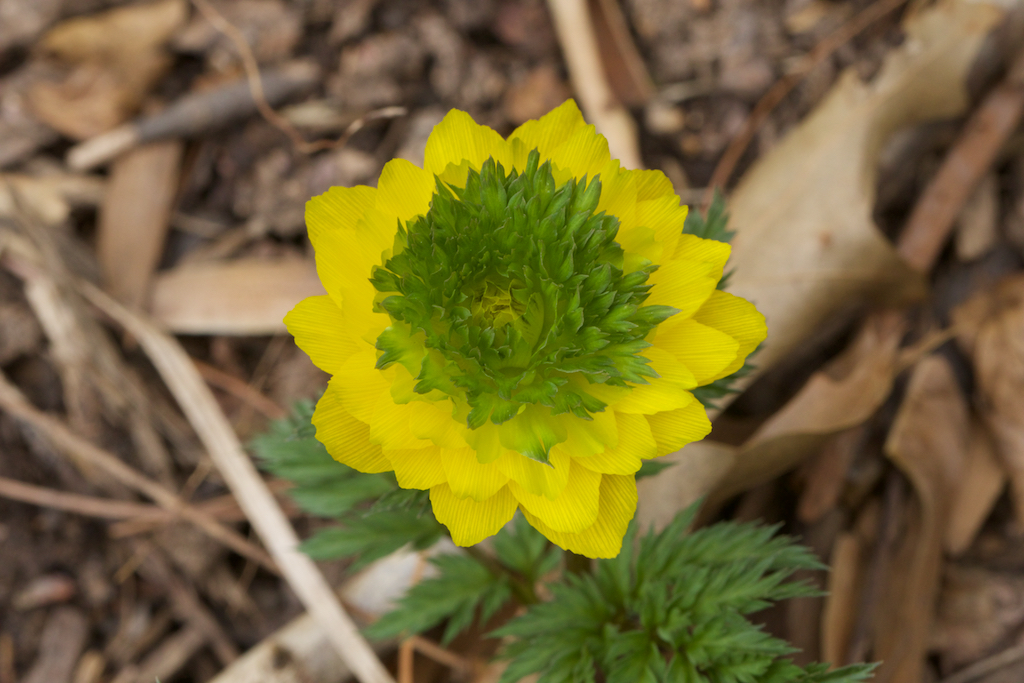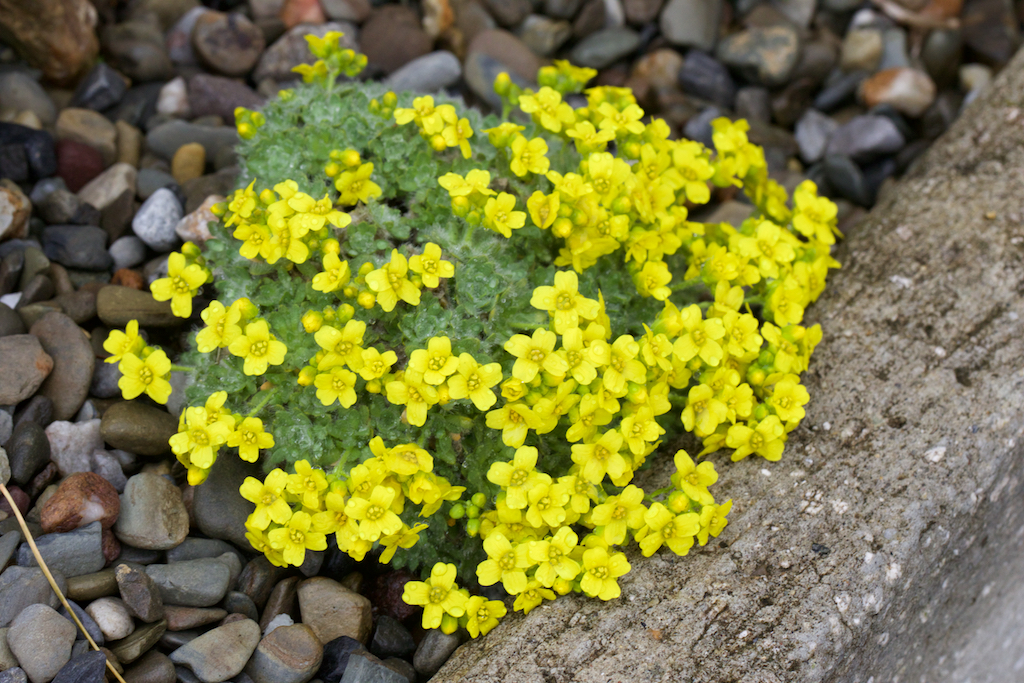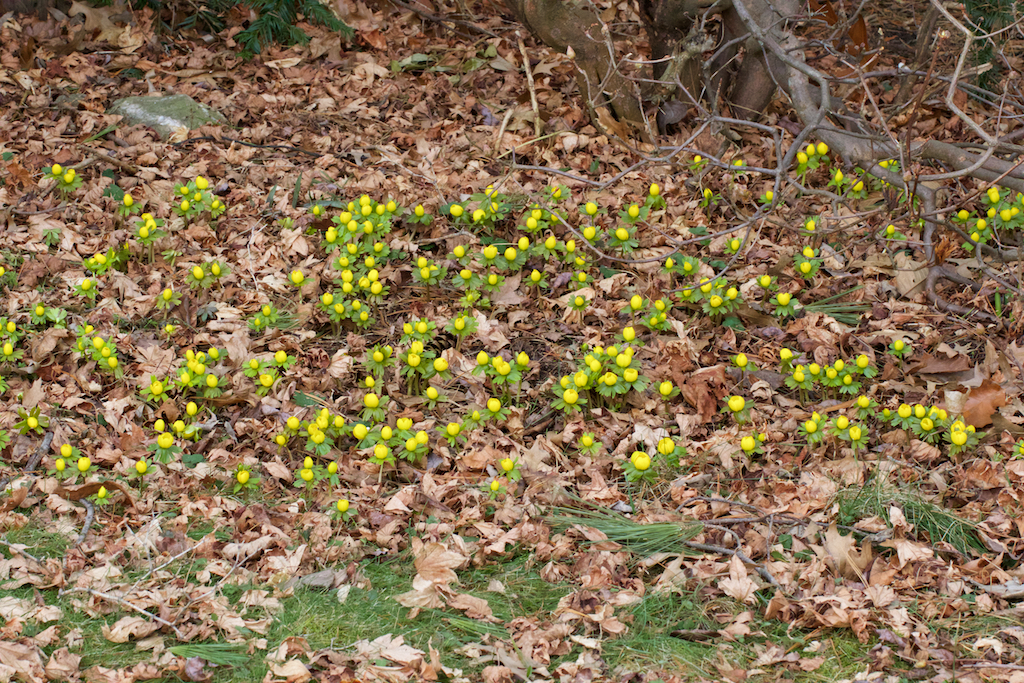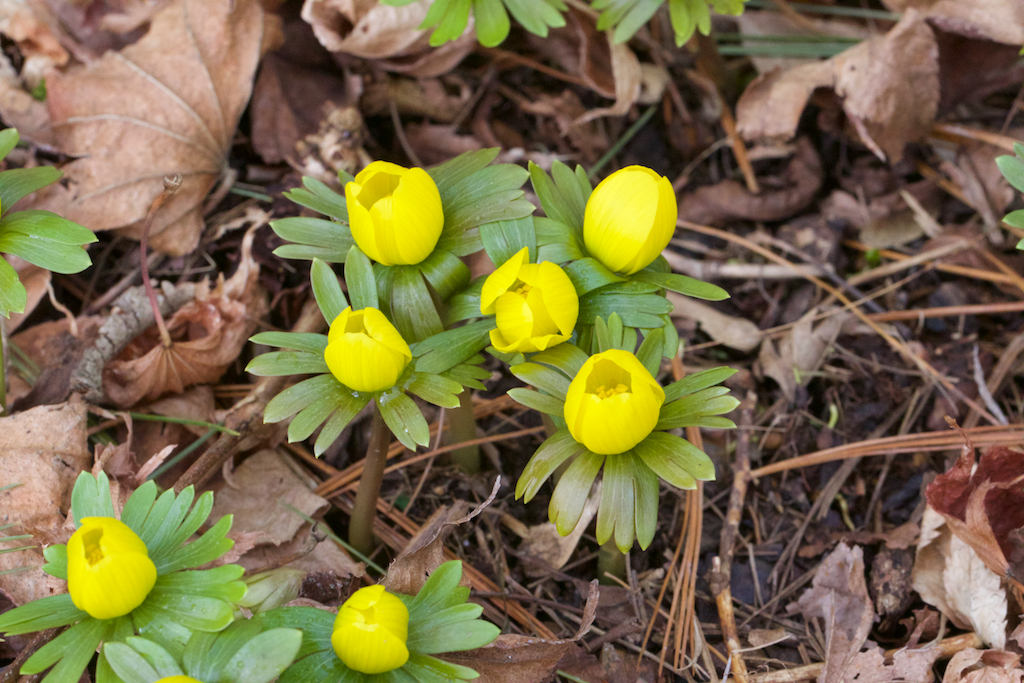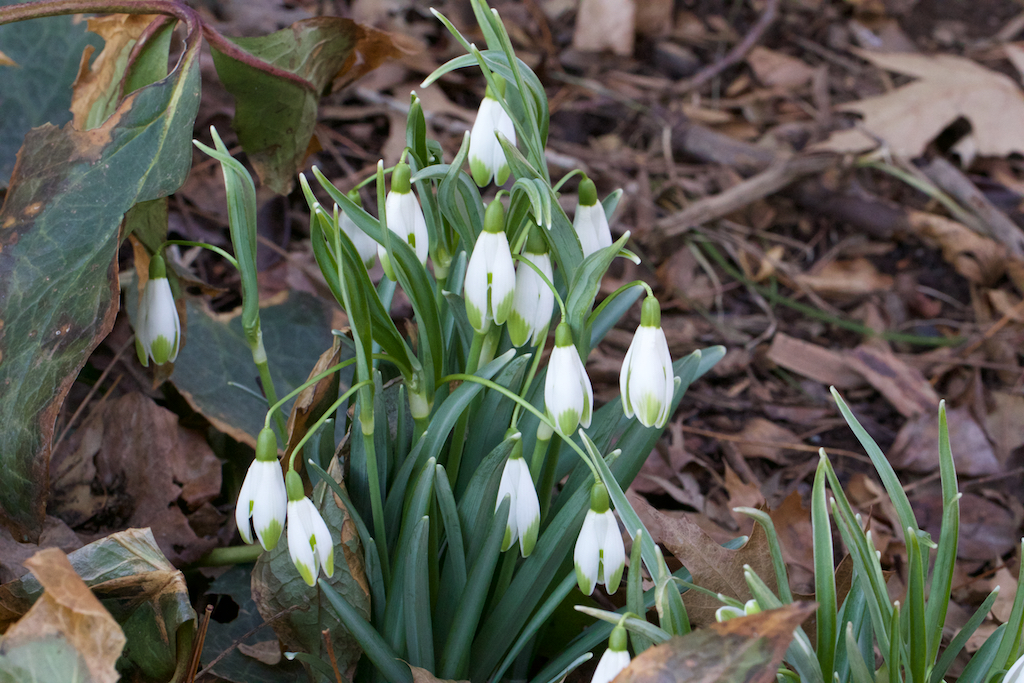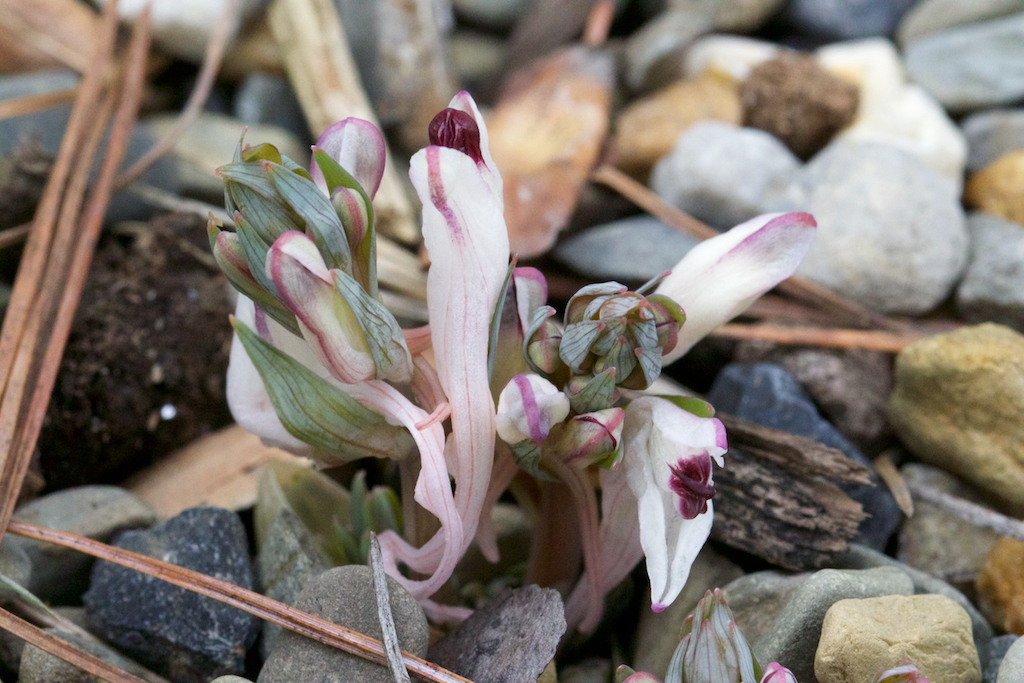Is it just me or has spring been incredibly slow in arriving this year…
Anyway, with a few warm days it looks like all the normal players are contributing to the daily walk around interest in the yard. Key for me are always the Adonis which got a little bedraggled from the back and forth of snowstorms and freezing ground. But even the special Sandanzaki is beginning to bud out.
The little species crocus have been popping out in the lawn where I scattered them years ago
And there is an especially nice tommassinianus that I would recommend to anyone.
Just today the little histroides iris that has been threatening to bloom since December has finally opened up.
Another standard for the early garden is the primrose that dots the spring pastures in England.
With things starting to pop outdoors it is ironic that some of the most fascinating flowers right now are in the greenhouse. There’s a spectacular Moraea that opened up today.
And a little Romulea that is the first of its clan to flower this year.
A couple of years ago (thanks Dick) a friend gave me some peruvian scilla bulbs that I potted up for the greenhouse. Mine were in the outside garden and have since perished from two really cold winters in succession. Anyway these squill have chosen to flower out of the pots this year and they are spectacular. There are 5 bulbs in each pot and this what just one of them looks like.
There’s a another Oxalis that I got from Brent&Becky last fall.
It has lovely crinkled foliage and is said to be hardy as well (I put a few in the flower bed so we shall see).
We have three good sized Clivia and they are flowering now as well. Nice enough that they earned a spot in the house.
Everyone should have clivia, they are so carefree and reliable.
And last but surely not least the first of my Ferrarias has come into bloom.
Starfish lily is another of the names that the Ferrarias go by. It is hard to imagine a more complex curling of the flower petals (claws) than on the Ferraria. This was another acquisition from the Pacific Bulb Society’s Bulb Exchange. I don’t know of any other way to get these little jewels. Can you picture what a field of these looks like in South Africa?
Garden Blogger’s Bloom Day February 2016
A few days ago it looked we were finally overcoming the 40 inches of snow that absolutely clobbered us at the end of January. You could see finally see little spring delights like the Winter Aconite peeking through. The first daffodil was unhappy but it was at least about to open up.
But such was not to be for very long. We got more snow this weekend and once again the flowers are pretty much hidden. Even the redoubtable Hellebores are looking pretty shopworn for this Garden Blogger’s Bloom Day.
Some things look pretty good in the snow like the holly and the witch hazels.
But I can see lots of damage from the volume of snow. Several small shrubs (camellias and daphnes) have badly broken branches just from the weight of that snowfall.
You can imagine flowers like this snow covered Clematis seedhead.
But once again we turn to pots in the greenhouse for more colorful flowers. The potted daffodils are continuing to flower and the lachenalias are all coming into bloom right now.
There is a very pretty little star flower that blooms right now.
And a wurmbea that I think is flowering for the first time for me.
And a Tritonia that flowered in February last year as well.
Dubia for those who wonder about such things means ‘doubtful’ as in not conforming to standard. Anyway, it looks pretty nice to me. It’s another South African native that looks like a miniature glad.
Lastly, another plant flowering for the first time for us is a little Scilla from Turkey that has the most marvelous dark purple stamens. It is said to be hardy in Michigan so it will probably go outdoors this year.
All of these five plants from the greenhouse came from seed distributed by the Pacific Bulb Society in 2013. They constitute a pretty good example of what you can obtain by joining the Pacific Bulb Society. Despite the name, the society is inhabited by bulb experts from around the world and they are most generous in sharing their seeds, bulbs, and expertise.
Oxalis in Motion
Oxalis species have wonderful variety in both flowers and foliage. There are more than 800 species altogether, most from South Africa. One of the characteristics that I’ve seen in most of the varieties that I’ve grown is a strong responsiveness to light. Both flowers and leaves can be responsive to light, but the unfolding and refolding of the flowers is particularly lovely to watch. Rather than just opening and closing they actually twist at the same time so that when closed they take on the aspect of a very tight cylinder.
To illustrate the process I made a time-lapse video of Oxalis purpurea ‘Skar’ over a 4 hour period one morning in the dining room.
httpv://vimeo.com/145508167
The flowers come to life as they greet the sun each day. Notice the untwisting.
Here are some of the other Oxalis that we are enjoying right now.
If you are interested in Oxalis I suggest a visit to Telos Rare Bulbs. Diana Chapman, the proprietor, has an exquisite collection of Oxalis (among many other bulbs).
Another south african that is fully open right now is Polyxena ensifolia.
So many buds packed into a very tight space.
One other item to mention today is the arrival of Daubyena stylosa. When we were visitng the Brooklyn Botanic Garden last Thanksgiving I noticed a marvelous Daubyena Stylosa plant in full flower. It was the first I had ever seen of that species. However I had just that august planted a few seedlings that I had obtained from a Pacific Bulb Society exchange. And now the first flowers have arrived on one of those seedlings.
Garden Blogger’s Bloom Day August 2015
Well I have very mixed feelings for this Garden Blogger’s Bloom Day. There are a few flowers like the beautiful gentians in the alpine bed. But it is also the dog days of August with over a week since the last rain and no rain in the immediate future. On top of that we returned from vacationing on Cape Cod to find that the water pump had stopped a week ago and all the elaborate water timing I had set up was a total fail. It was bad enough for the outdoor plants surviving the drought-like conditions, but the worst casualty was the greenhouse. With no water the greenhouse becomes an oven. I can’t even bear posting the picture of what the greenhouse looks like. The bulb things will survive but the alpine seedlings that were painstakingly started this year were devastated. Focusing on the positive, there is a splendid Cyrtanthus hybrid which found the desert-like conditions just to its liking.
Another little bulb in flower right now is a Barnardia from Japan.
Out in the very dry yard, the first thing that strikes you as it hangs over the porch is a lovely Limelight Hydrangea.
In the perennial beds there are two very striking lobelias that capture one’s attention.
This one was brought up from Plant Delights this spring.
There is also a cute little Rosularia from Wrightman Alpines that I noticed flowering on one of the pieces of tufa.
There are lots of annuals that give us picking flowers for inside the house. I noticed a clearwing moth hanging on one of the verbenas.
For the annual flowers in the garden the Mexican Sunflowers have totally dominated over the zinnias, marigolds, cosmos, etc.
Strawberry Jewels & More
Last year we replanted strawberries after disease had taken hold in our old row. I first put in 25 Jewel strawberries in a double row 18″ apart with pinebark mulch. Those 25 were allowed to expand and expand they did. I would say that the mesh of strawberries is about three foot wide and so dense as to exclude most weeds.
They have been extraordinarily productive. We’ve been bringing in a very large bowel of strawberries every night and predominantly from this patch. Later on last year, near the end of June I added another 50 plants (Allstar & Cavendish) and those have been contributing too, but not nearly so many as the jewel plants. Somehow in my unreasonable fear that we would not have enough strawberries, I added another 25 strawberry plants this spring (Cabot). I think we will need help picking next year.
Meanwhile on the flower front much has been happening. I was really pleased to see the Martagon lily ‘Arabian Knight’ flowering for the first time.
I love the way the Martagons have a completely different profile from the normal lily hybrids. The foliage itself makes a statement. We’ve also have the first flower on a small Chinese lily that I got from Far Reaches this year.
This is said to spread underground so that should be fun. I wouldn’t mind a clump of these little guys.
I was more than pleased to see that a couple of my favorite Arisaemas (fargesii and candidissimum) have finally decided to emerge. Take a note for future years that I should not expect or dig in these areas until June.
There are a number of little rain lilies popping out in the greenhouse right now. They are all a bit tender for this area, but I may give them a shot at outside exposure when I have enough of them in hand. For the moment I just take out to sit on the back porch.
You can see from the pictures that these little bulbs are multiplying in there pots, but it’s hard to compete with the oxalis which REALLY multiply in the pots. I started separating out the oxalis from 2013 plantings this year as they went dormant and the original 1-3 bulbs have expanded a lot.
They can be kept in a bag until August when they will be ready to go again for fall/winter blooming in the greenhouse. As a reminder the Oxalis in the greenhouse are nothing like the little pests you find in the garden.
Thinking of the greenhouse, there is a South American bulb with gorgeous deep blue flowers that has been blooming steadily for the last two weeks.
I always enjoy seeing these new bulbs or seeds bloom for the first time. I recently planted out several Anemone multifida ‘Rubra’ that I grew from the NARGS seed exchange in 2014.
Similarly this little Dianthus that I planted in tufa was grown from the NARGS 2014 seed exchange.
Speaking of seed exchanges, now is the time to be gathering seed from the early flowering plants. For many of them, like the Jeffersonia, you have to watching carefully to see that you get the seeds before the wind and the insects do…
Identifying the seeds for these large seeded plants is pretty straightforward but many plants are pretty tricky. Helps you appreciated what goes on for a more wide-ranging seed collector like BotanyCA.
I had a perfectly wonderful time at the NARGS annual meeting, but that deserves a posting in itself. I will say that I brought back a number of exotic plants including this little Conandron that I’ve put in the alpine bed.
The alpine bed continues to be very successful. I’ve added another Lewisia since they seem to like it so much.
And the alpine aster has returned from last year.
Out in the main garden beds the astrantia is coming into bloom, along with the horned poppies.
There is one little garden mystery. Somehow a european spotted orchid has appeared on the opposite side of the yard from where it bloomed last year (and where it has no flower buds this year). I have no memory of having planted one in this spot. But nonetheless it seems to be happily blooming away.
Let me close with the first thing I check in the morning — the spuria iris.
Garden Blogger’s Bloom Day – April 2015
As I was gathering up pictures for this post, I found it hard to stay focussed on the task. Each image I came across seemed to lead me down a path of ‘what was the name of that flower?’. I clearly need a garden elf who goes around checking on labels. Anyway, let me begin by saying April is, as always, a time of flower abundance so that Garden Blogger’s Bloom Day is necessarily a picking and choosing of which flowers to display. The daffodils are everywhere and their fragrance dominates the inside of the house and all of the gardens. But it is also a time to revel in the Hellebores who, though they started much earlier, have not gone away at all.
In contrast, it is worth noting that this is the peak time for the spring ephemerals which clamor to be appreciated for their very short time on the stage. They are generally around for just a few days at most and require getting down on your hands and knees to see the wonderful details.
A longer lasting springtime favorite is the Roadrunner trillium.
In the orchard and the woods the cherries are in bloom.
And alpine bed and troughs feature some distinctive flowers that are not usually part of the Maryland landscape.
Inside the house, the clivia is trying hard to make us focus on indoor flowers.
And lastly, since I am well past the normal posting time, let me close with the latest Cypripedium that we added from this year’s visit to Plant Delights. It’s a ahead of it’s season because I’ve just taken it from the greenhouse.
Happy Easter
Beth and son Josh dyed Easter eggs yesterday to continue a tradition going back many years. No little kids around this weekend but we can pretend.
The first week of April is a great time for the spring ephemerals. It seems like everything wants to come out the ground at once following the winter doldrums. I am especially fond of hepaticas and they are in the midst of their bloom cycle right now.
This is a particularly large flowered hepatica that I got several years ago from Seneca Hill Perennials (now closed).
Also in flower is a lovely pink seedling from Hillside Nursery.
A few years ago I got a pink seedling from Thimble Farms that has lovely purple stamens. It’s very hard to photograph because the slightest breeze will set it to vibrating.
I’ve also noticed that one of the american hepaticas has a very nice pink cast to it.
There are more hepaticas still emerging. Meanwhile their friends the corydalis are popping up around the yard.
One of Janis Ruksan’s best corydalis is Gunite, named after his wife.
A rather special flower is the Fritillaria stenanthera.
It is unlike any other Fritillaria that we have.
The flowers point outward and are individually quite lovely. It seems to be thriving outside.
Right beside it is a very nice adonis. This was apparently a spot that I thought was exceptional because I put two rather nice plants in about the same place. We will let them work it out.
Of course my go-to Adonis for distinctive variety is always Adonis ‘Sandansaki’.
In it’s early stage it has only a small green bud in the midst of a yellow flower. By the end, it’s pretty much all green lion’s mane.
It has three buds this year, the most ever.
Other yellow highlights are in the troughs and the alpine beds.
This one sits in the small trough by the back door.
The Draba acaulis is in one of the large troughs by the door to the greenhouse. Nearby is a pasque flower getting ready to emerge.
Reliably scattered around the yard are Primula vulgaris to reflect the way they are found in the wild in England.
And of course I’ve not mentioned the daffodils all over the place or the Hellebores that are everywhere — but that’s another story…
Garden Blogger’s Bloom Day March 2015 — Hello Chichibu Beni !
It’s Garden Blogger’s Bloom Day and what better way to welcome in the spring than seeing our first orange adonis for the year. The plain vanilla yellow adonis are seldom seen but this diminutive beauty is even rarer. This has been such a long cold winter that the flowers are grateful to finally see a little sunshine warming things up. The Adonis are always among the first plants to call for attention in the springtime. The yellow ones are also up and waiting to smile at the sunshine.
Notice all the flower buds in this clump.
Out in the front yard the winter aconite have finally popped and show the evidence of the many years they have been colonizing the front bed.
I think this was originally ten small tubers.
Of course snowdrops are everywhere right now. The Viridapice are particularly nice.
The surprise entry for the day was the first of the corydalis. These have popped up in the alpine bed.
Other than these there are some crocus, the witch hazels, and a lot of wannabe flowers. I think are right on the verge of seeing many more flowers.
In the greenhouse there are a few special items worth highlighting. For the first time we have Tulbaghia from a 2013 bulb planting.
There is a very nice small ornithogalum species that derives from Jane McGary by way of Pacific Bulb Society distribution.
And a freesia with many flowering stalks.
The Lachenalia mutabilis is nice enough that we brought it into the house.
That’s it for March 15th. What’s growing in your garden?

